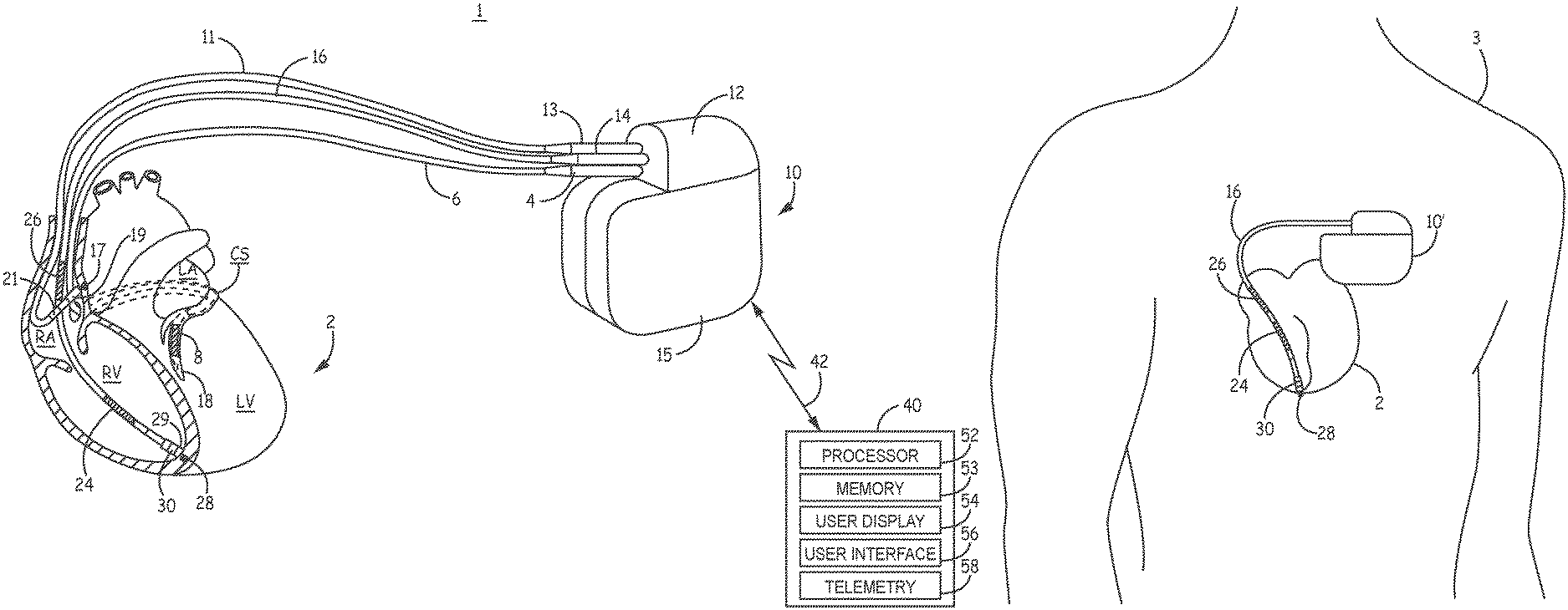Invented by Elise J. HIGGINS, Mark L. Brown, Jian Cao, Medtronic Inc
The market for atrial arrhythmia episode detection in a cardiac medical device is expected to grow significantly in the coming years. This is due to several factors, including the increasing prevalence of atrial arrhythmia, the aging population, and the growing demand for remote monitoring and telemedicine solutions.
One of the key drivers of this market is the increasing prevalence of atrial arrhythmia. According to the American Heart Association, atrial fibrillation (AFib) affects an estimated 2.7 million people in the United States alone. This number is expected to increase as the population ages and the prevalence of risk factors such as obesity and hypertension continues to rise.
Another factor driving the market for atrial arrhythmia episode detection is the aging population. As people age, their risk of developing atrial arrhythmia increases. This has led to a growing demand for medical devices that can detect and monitor this condition, particularly among older adults who may have other health conditions that make them more vulnerable to complications.
In addition to these factors, the market for atrial arrhythmia episode detection is also being driven by the growing demand for remote monitoring and telemedicine solutions. With the COVID-19 pandemic, there has been a significant increase in the use of telemedicine and remote monitoring technologies. This has created a significant opportunity for companies that specialize in developing medical devices that can be used in these settings.
Overall, the market for atrial arrhythmia episode detection in a cardiac medical device is expected to continue to grow in the coming years. As the prevalence of atrial arrhythmia increases and the demand for remote monitoring and telemedicine solutions continues to grow, there will be a significant opportunity for companies that can develop innovative and effective medical devices to meet these needs.
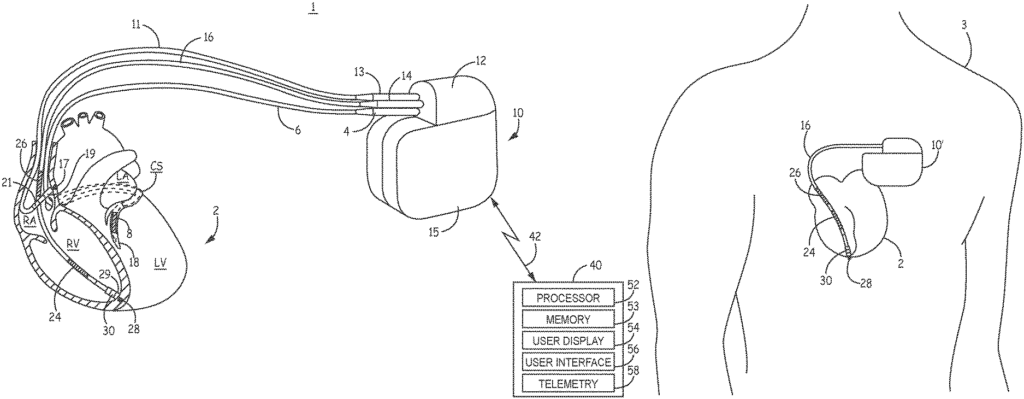
The Medtronic Inc invention works as follows
A medical device” is configured to detect atrial tachyarrhythmia episodes. The device detects a cardiac sign, identifies R waves in the signal that are associated with ventricular depolarizations, and then determines classification factors based on the R-waves over a preset time period. By comparing the classification factors with classification criteria, the device determines whether the predetermined period is unclassified or if it has atrial tachyarrhythmia or non-atrial. After at least one atrial tachyarrhythmia-classified time period, a classification criterion will be adjusted to a new classification criterion. The device detects an atrial tachyarrhythmia when at least one time period is classified as atrial arrhythmia using the adjusted classification criteria.
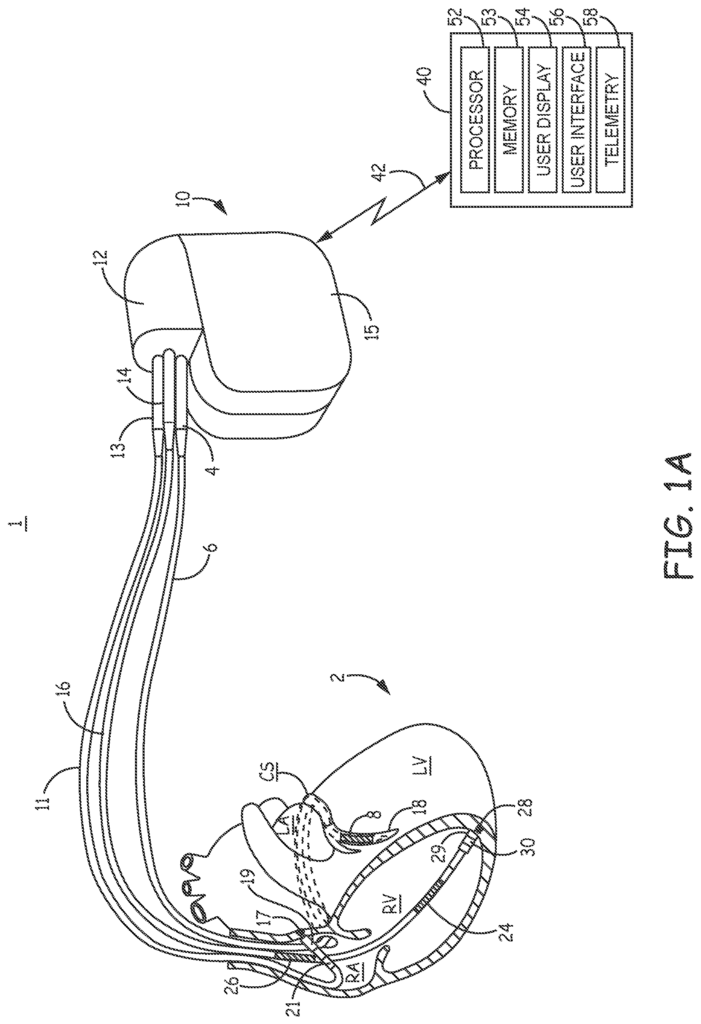
Background for Atrial arrhythmia episode detection in a cardiac medical device
During normal sinusrhythm (NSR), electrical signals are produced by the Sino-Atrial (SA) Node located within the right atrial walls. This regulates the heartbeat. The SA node sends out atrial depolarization signals that cause the contraction and depolarization of the atria. These signals then reach the Atrioventricular node (A-V). The A-V Node responds to this by sending a ventricular signal via the bundle of His in the ventricular septum, and then through the bundle branches of the Purkinje fibers and the Purkinje muscles of the left and right ventricles.
Atrial tachyarrhythmia is a disorder that includes atrial fibrillation in its disorganized form, and various degrees of organized atrial rhythms including atrial Flutter. Atrial fibrillation occurs when there are multiple focal triggers within the atrium, or due to changes in the substrate in the atrium that cause heterogeneity in conduction in different areas of the atria. Ectopic triggers may originate in either the left or right atria or pulmonary veins. The AV-node will be bombarded with frequent and irregular activations from the atrium, but it will only send a depolarization when it is not refractory. The irregularity of the ventricular cycle will depend on whether the AV node is refractory or not.
As the seriousness of atrial arrhythmias has been understood, including an increased risk of ventricular arrhythmias, stroke and other serious conditions, there is growing interest in treating and monitoring atrial arrhythmias. Implantable cardiac monitors (ICMs) and implantable defibrillators can be configured to capture cardiac electrical signals which can then be analyzed in order to detect atrial arrhythmias.
In general the disclosure is directed at techniques for detecting heart events, specifically atrial tachyarrhythmia, by a device. The techniques described herein allow a medical device to analyze a cardiac signal over a number of time intervals and classify each time period based on the characteristics of that cardiac signal. The device can adjust a threshold to classify the cardiac signal at least for a portion. “Atrial tachyarrhythmia can be detected if a certain number of time intervals are classified as such, including at least one period before the threshold adjustments and one or more periods after.
In one example, disclosure provides a way to detect an episode of atrial tachyarrhythmia in a medical instrument. The method includes sensing a heart signal and identifying R waves in the signal that correspond to ventricular depolarizations. The method includes identifying classification factors from R-waves over a predetermined first time period, and classifying that first time period as an atrial tachyarrhythmia by comparing those classification factors with classification criteria. After classifying the time period 1 as atrial arrhythmia the method includes changing a classification criteria of the classification criteria to a new classification criteria, determining at least one time period 2 as atrial arrhythmia and comparing the determined classification factors to the adjusted criteria.
The disclosure also provides, in another example, a medical instrument for detecting atrial tachyarrhythmia episodes. The medical device has sensing circuitry that receives a cardiac signal via a plurality electrodes attached to the device. The medical device includes a processor that is configured to identify R waves in the cardiac signals associated with ventricular depolarizations. It can also determine classification factors based on the R-waves over a predetermined first time period and then classify this first time period as an atrial tachyarrhythmia by comparing these classification factors to the classification criteria. The processor is also configured to change a classification criteria of the classification criteria to a new classification criterion once the first time interval has been classified as an atrial arrhythmia. It can then classify atleast one subsequent period as atrial arrhythmia using the adjusted classification criteria.
In another example of the disclosure, a nontransitory computer-readable medium is provided that stores instructions to cause a processor in a medical apparatus to perform a procedure for detecting a tachyarrhythmia atrial episode. The method includes sensing a heart signal and identifying R waves in the signal that correspond to ventricular depolarizations. The method includes comparing classification factors with classification criteria and determining classification factors based on the R-waves that were identified during a predetermined first time period. After classifying the time period 1 as atrial arrhythmia the method includes changing a classification criteria of the classification criteria to a new classification criteria, classifying atleast one subsequent period as an atrial arrhythmia and comparing the comparison factors to the new classification criteria.
This summary is meant to give an overview of what’s described in the disclosure. The accompanying drawings and descriptions below are not meant to be an exhaustive or exclusive explanation of the methods and apparatus described. The accompanying drawings and description provide additional details on one or more of the examples.
In the following description, reference is made to illustrative examples of the methods described. Other embodiments are possible without departing the scope of disclosure.
In various examples, the cardiac electrical signal can be used to determine successive ventricular cycles lengths in order to detect atrial arrhythmias. Ventricular cycle times can be calculated as the interval between successive R waves that are detected from the cardiac signal and accompanying depolarization. For example, the differences between successive RR intervals (RRIs), are analyzed to determine evidence of atrial tachyarrhythmia. According to the present invention, a period of time of the cardiac signal can be classified as either AF or non-AF based on the analysis of RRIs and/or other factors. A medical device using the disclosed techniques can detect AF when a predetermined amount of time periods are classified as AF. The device may, however, adjust the classification criteria applied to classify a time interval of the cardiac signals prior to detecting the AF, and detect the AF using the adjusted classification criteria applied for subsequent time periods.
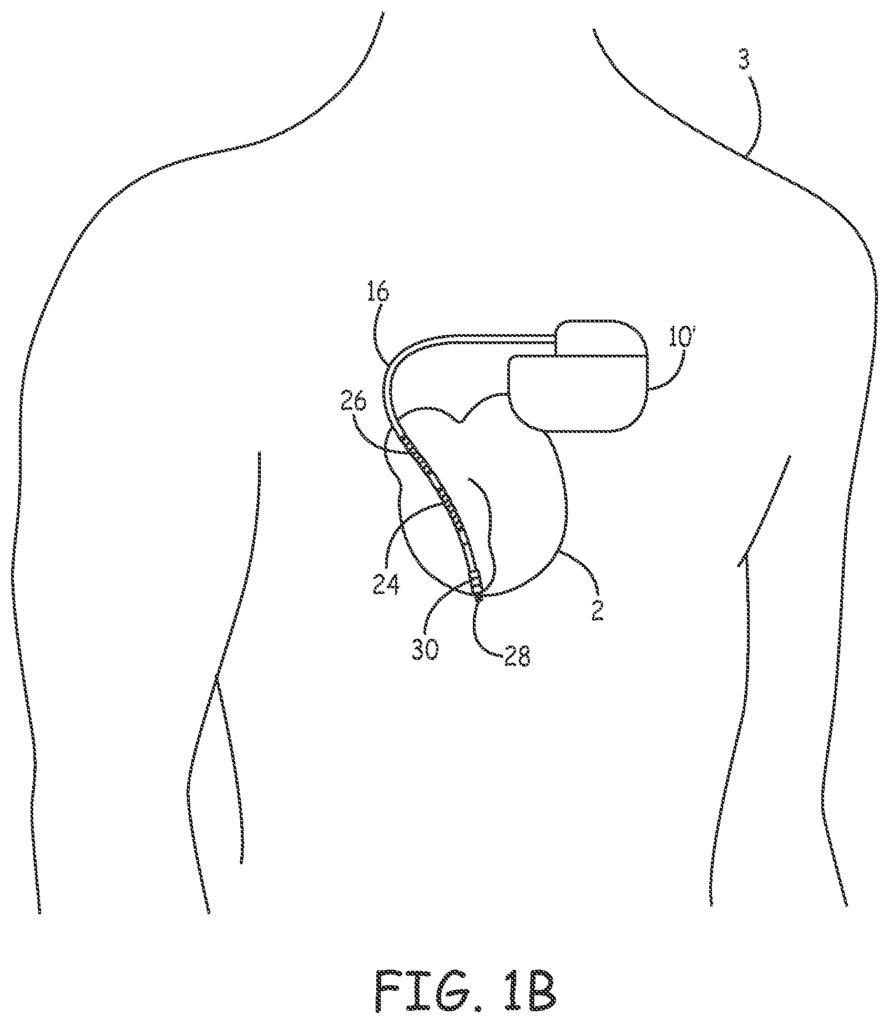
Aspects” of the methods described in this document can be incorporated into a variety implantable or external devices with cardiac signal monitoring capability, which may include or not therapy delivery capability. These devices can be single chamber, bi-ventricular or dual chamber pacing systems. They sense R-waves to deliver electrical stimulation therapy into the ventricles. The methods for detecting atrial arrhythmias disclosed herein may be used in external cardiac monitors with electrocardiogram electrodes attached to the skin of a patient to detect R waves, such as Holter monitors. They can also be implemented within computerized systems which analyze ECG data or cardiac electrogram data that has been recorded. The embodiments may also be implemented in patient monitoring systems, such as central computer systems that process cardiac electrical signals or other data from implantable or wearable monitors.
FIG. According to an example, FIG. 1 is a diagrammatic representation of an implantable device (IMD), system 1, for detecting arrhythmias at the atrium. The IMD 1 of FIG. The IMD system 1 of FIG. ICD 10 has a connector block 12, which can be configured to receive proximal end of right ventricular lead 16 (RV), right atrial lead 11 (RA), and coronary sinus lead 6 (CS), which are advanced through the bloodstream for positioning electrodes in three or four heart chambers.
The RV lead 16 is placed so that its distal tip is in the right ventricular cavity to sense cardiac signals in the RV and deliver pacing or shock pulses. RV lead 16 has pacing and sensor electrodes, shown as a tip electrode 28, and a ring-shaped electrode 30. In some cases, tip electrode 28 can be an extendable helix mounted retractably inside an electrode head. RV lead 16 is further shown to carry defibrillation electrodes 24 and 26, which may be elongated coil electrodes used to deliver high voltage cardioversion/defibrillation (CV/DF) electrodes. The Defibrillation Electrode 24 is herein referred to as the “RV defibrillation electro?” or ?RV coil electrode? It may be carried on RV lead 16, so that it is placed substantially in the right ventricle, when distal sensing and pacing electrodes 28, 30 are positioned to pacing or sensing the right ventricle. The Defibrillation Electrode 26 is herein referred to as a “superior Vena Cava (SVC), defibrillation electrode”. or ?SVC coil electrode? Because it can be carried along RV Lead 16 so that it is at least partially positioned along the SVC, when the distal tip of RV Lead 16 is advanced into the right ventricle.
Each electrode 24, 26, 28, and 30 is connected to an insulated conductor that extends within the body 16 of lead.” “Each of electrodes 24, 26, 28 and 30 are connected to a respective insulated conductor extending within the body of lead 16. Although ICD 10 has been illustrated in FIG. ICD 10 is shown in FIG. 1B below. It is possible to detect atrial tachyarrhythmia using the techniques described herein without having atrial signal detection. RA lead 11 can be used in certain examples.
If included, RA Lead 11 can be positioned so that its distal tip is near the right atrium or superior venacava. Lead 11 has pacing/sensing electrodes 17, 21. The tip electrode 17 may be an extendable, helix-shaped electrode mounted retractably in electrode head 19. A ring electrode 21, located proximally to tip electrode 17, is also shown. The electrodes 17 & 21 are used for sensing & pacing the right atrium. They are connected to insulated conductors with the body of RA Lead 11. The proximal ends of each insulated conductor are connected to the connector on the proximal connector 13.
The use of CS lead 6 for detecting atrial tachyarrhythmia is optional. When present, CS leads 6 can be advanced into the left-side vasculature via the coronary vein and a sinus. In FIG. In FIG. 1A, one or more electrodes 8, which can be used with the RV coil electrode 24, or SVC coil electrode 26, to deliver electrical shocks during cardioversion or defibrillation therapy, are shown. Other examples include the coronary sinus lead 6, which may be equipped with electrodes 8, for delivering cardiac electrical signals to the left chambers, such as the left atrium and/or left ventricle. The electrodes 8 are connected to insulated conductors in the body of CS Lead 6, which connects to the proximal connector 4.
The RV sensing and pacing electrodes 28-30 may be used in a bipolar configuration, also known as a “tip-to ring” pair. Configuration for sensing electrical cardiac signals. Additionally, the RV tip electrode 28 can be combined with coil electrodes 8, 24, or 26, to form an integrated bipolar pair. This is commonly called a “tip-to-coil” configuration. Configuration for sensing electrical cardiac signals. ICD 10 can, for example select one or several sensing electrode vectors, including a tip to ring sensing between electrodes 28, 30 or a coil-to tip sensing between, e.g. RV tip electrode 28, SVC coil 26 or RV coil 24, RV ring 30 and SVC coil 26, or RV ring 30 and RV coil 24. ICD 10 may select any of the RV lead electrodes 26, 28, or 30, in unipolar sensing, with ICD housing 15, commonly known as the “can”, to serve as an indifferent electrode. ICD 10 may select any of the electrodes 24, 26, 28 or 30 carried by RV lead 16 in a unipolar sensing configuration, with the ICD housing 15 serving as an indifferent electrode. This is commonly referred to as a?can? electrode. The electrode.
In other examples the ICD housing 15, in conjunction with one or more coil electrodes 8, 24, or 26, may be used as a subcutaneous electrode for delivering CV/DF to the atria and ventricles. Alternate lead systems can be used in place of the three-lead system shown in FIG. 1A. The multi-chamber ICD with lead system shown in FIG. The present invention includes methodologies that can be adapted to any ICD, pacemaker, or dual-chamber system.
An external 40 device is shown in telemetric communications with ICD 10 via an RF communication connection 42. The external device 40 is sometimes referred to by the term “programmer”. It is used by a doctor, technician, nurse or clinician to program operating parameters for ICD 10. The external device 40 can be found in a hospital, clinic or other medical facility. The external device 40 can be implemented as a home monitoring device or handheld device, which may be used at a medical facility or in the home of a patient. External device 40 can be used to program operating parameters into ICD 10, such as sensing parameters and therapy delivery parameters.
External Device 40″ includes a processor (52), memory (53), user display (54), user interface (56) and telemetry circuitry (58). Processor 52 is responsible for controlling external device operations, and processing data and signals from ICD 10. Processor 52, according to the techniques disclosed herein receives data from ICD 10 that is transmitted to telemetry circuitry 56 by ICD 10. The following description is in conjunction with FIG. ICD 10 can be configured to transmit cardiac signal data from external device 40 and store cardiac data for detected atrial tachyarrhythmia. The processor 52 transmits to the user display 54 at least a portion the cardiac electrical data in order to generate a display for the cardiac electrical signals detected as atrial arrhythmia.
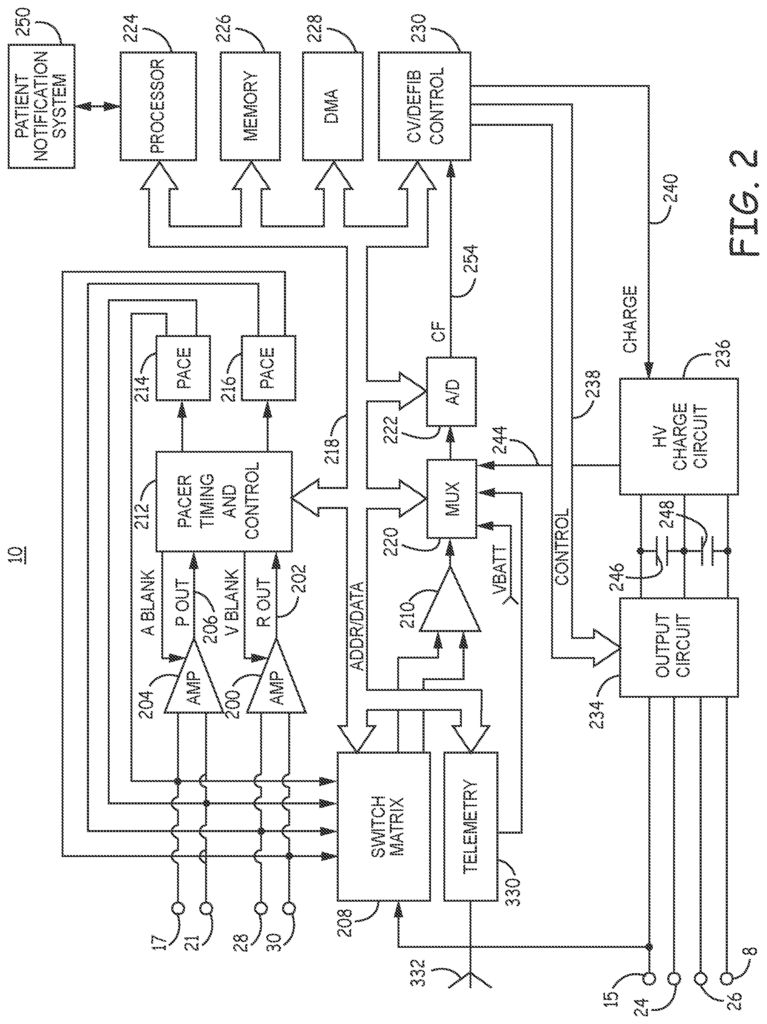
The user display 54 displays cardiac signal data, and may also include a graphic user interface to facilitate programming of one or several sensing parameters as well as atrial arrhythmia detector parameters by an external device 40. External device 40 can display data and information related to ICD functions for a user to review ICD operation, programmed parameters and cardiac electrical signals and other physiological data retrieved from ICD 10. The user interface 56 can include a touch screen or other pointing devices, keyboards and/or keypads to allow a user interact with the external device 40 in order to initiate a session for retrieving and/or sending data to ICD 10 as well as selecting and programming desired sensoring and therapy delivery parameters into ICD 10.
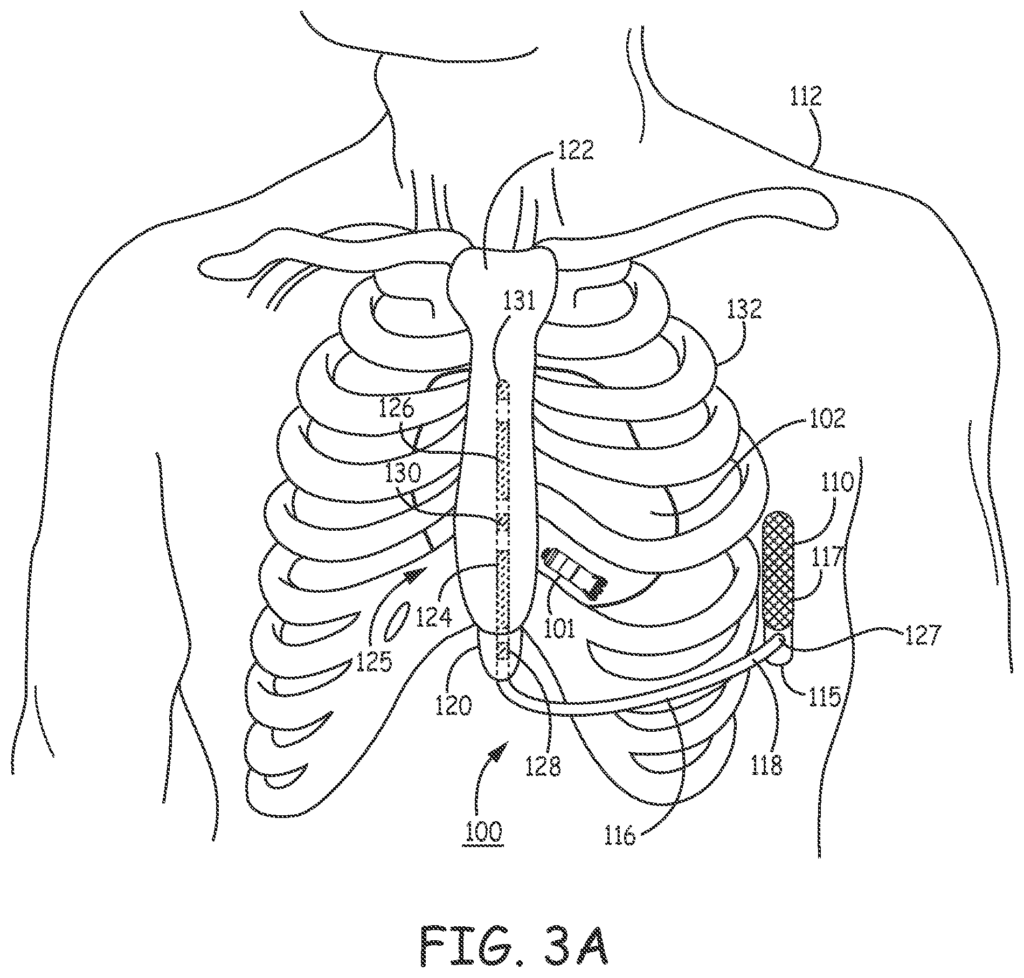
Click here to view the patent on Google Patents.
